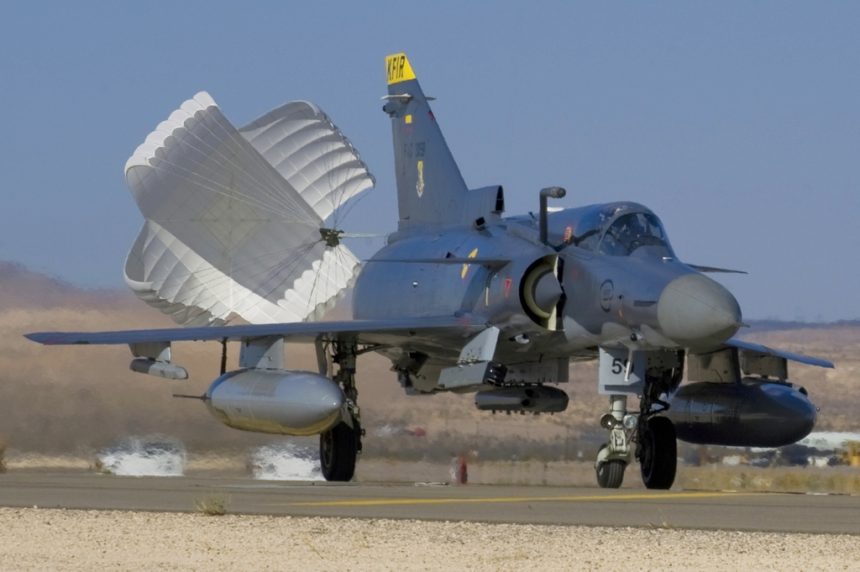The IAI Kfir, (“Lion Cub” in Hebrew) has just received an upgrade program to extend its life for another 40 years (possibly).
During the late 1960’s the Israel Aircraft Industries were forced to look inwardly after France had imposed an arms embargo on Isreal (which lasted 42 years) after Israel had paid for development work by Dassault on the Mirage V, a fair weather ground attack aircraft to replace the Israeli Mirage III’s in that role.
In short, avionics were removed from behind the cockpit to increase the fuel capacity and to lower maintenance costs and, in response to the arms embargo, Israel produced an unlicensed copy of the Mirage V and called it the Nesher, after it is thought that the blueprints for the engine and air frame had been acquired from third party Mirage producers.
After the Six Day war, supplies of Mirage III were pretty low so producing a domestic version made sense and got around the embargo completely.
The Kfir program began whens the need to enhance the Nesher became apparent due to the improving Soviet era jets that Israel’s neighbours were acquiring at the time.
The first thing the Kfir designers were to look at was an engine; two engines were looked at: the Rolls Royce Spey Turbofan (which had been used in the Blackburn Buccaneer, F-4K Phantom in UK use and by the AMX project in Italy) and the General Electric J79 Turbojet, the same as in the McDonnell Douglas F-4 Phantom of which the Israeli Air Force (IAF) were just starting to take delivery of, which was selected and produced locally.
Due to the need for increased cooling of the J79, the Israeli engineers shortened the Mirage III rear fuselage and widened it to accommodate wider air intakes and an additional air intake was also introduced to the bottom of the vertical stabilizer.
A modified two seat Mirage IIIc took to the skies in 1970 powered by the new J79 engine shortly followed thereafter by a J79 powered Nesher during September 1971. But it was June 1973 when a highly modified Nesher powered by the J79 took to the skies for the first time, along with the Israeli avionics on board and re-arranged fuel tanks to improve range.
The finished article entered IAF service during 1975 and saw its first combat during an air strike into Lebanon during 1977 and even got its first kill, a Syrian Mig-21, in 1979 the same day as the F-15 took its first air to air kill. By 1982 the Kfir was used mostly in the ground attack role, leaving the F-15’s & F-16’s to take on the air superiority role.
The Kfir was retired from IAF service in 1996 but is still used by several export customers. Due to the J79 being a U.S design it meant that Israel had to gain permission from the U.S State Department to export the Kfir which did limit the export potential but was bought by Colombia, Ecuador and Sri Lanka and have been used extensively by those nations.
Twenty five examples were also used by the U.S Navy as aggressor aircraft operating out of NAS Fallon and were given the name of F-21A.
Israel has recently announced a new upgrade program to extend the life of the existing export examples named “Block 60.”
The upgrade basically strips the aircraft back to its fuselage and then performs a nuts and bolts rebuilt, upgrading avionics and other systems including a new data-link system, something the Kfir never had being a third generation aircraft.
IAI state that the improvements bring the Kfir up to a fourth generation aircraft and something that is suitable for the 21st Century.
All of Colombia’s Kfir jets have gone through this program as well as the further twelve examples that were acquired; IAI is hoping that it can sell the Block 60 upgrade to the other two operators.
Richard Clements for TheAviationist.com
















